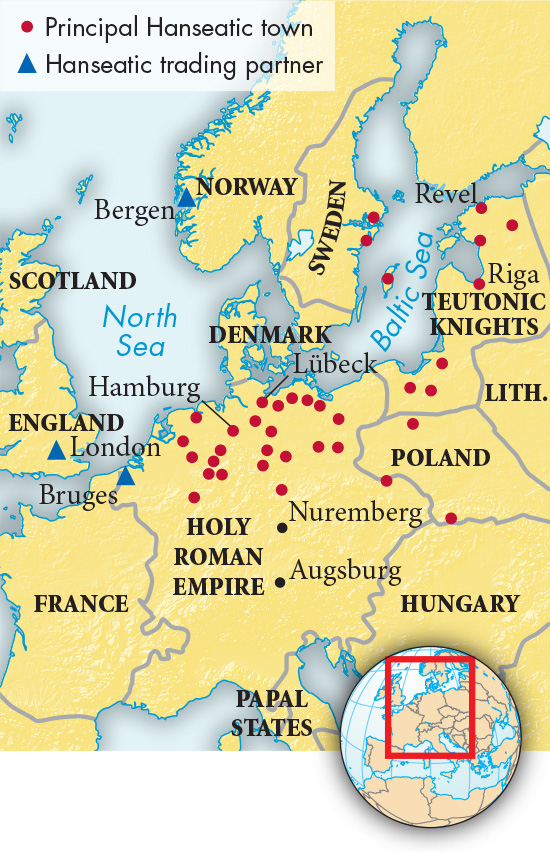A History of World Societies:
Printed Page 410
A History of World Societies Value
Edition: Printed Page 406
The Expansion of Trade and the Commercial Revolution
The growth of towns went hand in hand with a revival of trade as artisans and craftsmen manufactured goods for local and foreign consumption. As in the city-
Italian cities, especially Venice, led the West in trade in general and completely dominated trade with Asia and North Africa. Venetian ships carried salt from the Venetian lagoon; pepper and other spices from North Africa; and slaves, silk, and purple textiles from the East to northern and western Europe. Wealthy European consumers had greater access to foreign luxuries than they had earlier, and their tastes became more sophisticated. Merchants from Florence and Milan were also important traders, and they developed new methods of accounting and record keeping that facilitated the movement of goods and money. The towns of Bruges, Ghent, and Ypres in Flanders were leaders in long-

In much of northern Europe, the Hanseatic League (known as the Hansa for short), a mercantile association of towns formed to achieve mutual security and exclusive trading rights, controlled trade. During the thirteenth century perhaps two hundred cities from Holland to Poland joined the league. The ships of the Hansa cities carried furs, wax, copper, fish, grain, timber, and wine. These goods were exchanged for other products, mainly cloth and salt, from western cities. At cities such as Bruges and London, Hanseatic merchants secured special concessions exempting them from all tolls and allowing them to trade at local fairs. Hanseatic merchants also established foreign trading centers, which they called “factories,” because the commercial agents within them were called “factors.” (Later the word factory would be applied to centers of production as well.)
These developments added up to what historians of Europe have called the commercial revolution, a direct parallel to the economic revolution going on in Song Dynasty China at the same time (see “The Scholar-Officials and Neo-Confucianism” in Chapter 13). In giving the transformation this name, historians point not only to an increase in the sheer volume of trade and in the complexity and sophistication of business procedures but also to the new attitude toward business and making money. Some even detect a “capitalist spirit” in which making a profit was regarded as a good thing in itself.
The commercial revolution created a great deal of new wealth, which did not escape the attention of kings and other rulers. Wealth could be taxed, and through taxation kings could create strong and centralized states. Through the activities of merchants, Europeans again saw products from Africa and Asia in city marketplaces, as they had in Roman times. The commercial revolution also provided the opportunity for thousands of serfs in western Europe to improve their social position. There were also strong continuities: many people continued to live hand to mouth on low wages; most towns remained small; and the nobility and churchmen continued to determine the preponderant social attitudes, values, and patterns of thought and behavior.